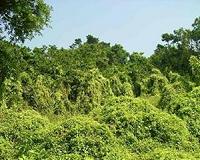 |
Cordoba, Spain (SPX) Apr 06, 2011 Irrigating agricultural crops places huge demands on water resources around the globe. In Spain for instance, where agriculture is a major contributor to the nation's economy, 85% of country's total water demand comes from the agricultural sector. The excessive use of irrigation water has resulted in serious environmental concerns in Mediterranean countries, where rising demand has deteriorated groundwater resources, depleted aquifers, and accelerated saltwater intrusion. Scientists in Spain are working on new technologies to classify and monitor irrigated crops with a goal of promoting sustainable agricultural practices. "To encourage sustainable use of water resources, it is essential to develop advanced and accurate tools to classify and monitor irrigated crops and to estimate the surface occupied by each irrigated crop, each of which usually has different water requirements", said Francisca Lopez-Granados, lead author of a study published in a recent issue of the Journal of the American Society for Horticultural Science. Lopez-Granados and a team of researchers reported on field studies they designed to evaluate the potential of multispectral reflectance and seven vegetation indices in the visible and near-infrared spectral range for discriminating and classifying bare soil and several horticultural irrigated crops. According to the scientists, the research is the first step of a broader project with the overall goal of using satellite imagery with high spatial and multispectral resolutions for mapping irrigated crops. The team collected on-ground reflectance data of bare soil and annual herbaceous crops (garlic, onion, sunflower, bean, maize, potato, winter wheat, melon, watermelon and cotton), perennial herbaceous crops (alfalfa and asparagus), deciduous trees (plum), and non-deciduous trees (citrus and olive) using a handheld field spectroradiometer in spring, early summer, and late summer. They applied three classification methods to discriminate differences in reflectance between the crops and bare soil: stepwise discriminant analysis and two artificial neural networks (multilayer perceptron and radial basis function). "The results of the three classification methods showed that the highest percentage of accuracy was achieved with multilayer perceptron (MLP), followed by stepwise discriminant analysis and radial basis function (RBF)", said Lopez-Granados. The classification matrix from the MLP model using cross-validation showed that most crops discriminated in spring and late summer were 100% classifiable; the best overall classification was obtained in late summer, when fewer crop species were available. "Our results show that the MLP model identified and recognized the differences between spectral signatures of bare soil and the most important horticultural irrigated herbaceous and tree crops at spring and late summer. They also indicate that the MLP neural network model should be considered for a successful classification of remote sensed data," concluded Lopez-Granados. "For future research, we recommend acquiring two multispectral satellite images taken in spring and late summer for monitoring and mapping these irrigated crops, thus avoiding costly field surveys". The complete study and abstract are available on the ASHS Journal of the American Society of Horticultural Science electronic journal web site.
Share This Article With Planet Earth
Related Links American Society for Horticultural Science Farming Today - Suppliers and Technology
 Manage Biological Invasions Like Natural Disasters
Manage Biological Invasions Like Natural DisastersWashington DC (SPX) Apr 5, 2011 Biological invasions get less prime-time coverage than natural disasters, but may be more economically damaging and warrant corresponding investments in preparedness and response planning, according to three biologists writing in the April issue of BioScience. Anthony Ricciardi of McGill University and his coauthors point out that species invasions are becoming more frequent worldwide, lar ... read more |
|
| The content herein, unless otherwise known to be public domain, are Copyright 1995-2010 - SpaceDaily. AFP and UPI Wire Stories are copyright Agence France-Presse and United Press International. ESA Portal Reports are copyright European Space Agency. All NASA sourced material is public domain. Additional copyrights may apply in whole or part to other bona fide parties. Advertising does not imply endorsement,agreement or approval of any opinions, statements or information provided by SpaceDaily on any Web page published or hosted by SpaceDaily. Privacy Statement |